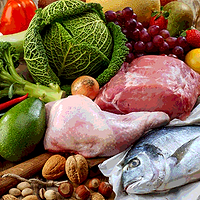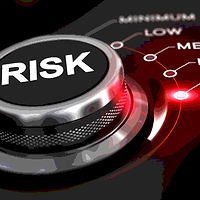Guidelines for Developing Countries to Modernize Their Food Safety Systems

Everyone has the right to safe and nutritious food. Therefore, all countries (developed or developing) must develop and implement modern, suitable, effective, and sustainable national food control/safety systems. The Food and Agriculture Organization of the United Nations (FAO) defines a food control system as “a mandatory regulatory activity of enforcement by national authorities to provide consumer protection and ensure that all foods during production, handling, storage, processing, and distribution are safe, wholesome and fit for human consumption; conform to safety and quality requirements; and are honestly and accurately labelled as prescribed by law” to achieve the ultimate goals of protecting public health, improving nutrition, enhancing domestic markets and international trade, and achieving resilience and food security. Developed countries, including the U.S., Canada, the U.K., etc., have recently modernized their food safety systems. However, some developing countries including China, India, Bangladesh, Egypt, Tajikistan, etc. need guidance to reform and modernize their food safety systems.
Developing modern food safety systems requires a specific level of food safety capacity (FSC; knowledge, technical skills, operational procedures, food safety culture, resources, food safety policies, food laws, food safety regulations, food safety standards, etc.) that allows individuals (farmers, processors, distributors, consumers, etc.), organizations (government agencies, official/accredited food control laboratories, food firms, etc.), and systems to function properly, effectively, and sustainably to ensure the safety of imported and domestically produced food for their citizens. Furthermore, a country’s ability to export to international markets depends on the capacity of their food safety systems to meet international food safety standards and regulations. Developing countries have different levels of FSC. This article is intended to guide government officials in developing countries and/or those invest in FSC building in developing countries to follow FAO guidelines to conduct FSC needs assessments (FSCNAs) to determine the level of FSC and needs to subsequently establish, strengthen, or modernize the food safety systems in their own countries.
 International organizations (the World Health Organization, FAO, etc.) have developed tools/ guidelines to assist countries in assessing/evaluating the level of FSC to establish/modernize their food safety systems. FAO has developed several guidelines, including Strengthening National Food Control Systems Guidelines to Assess Capacity Building Needs. The guidelines assist countries in evaluating (observe weaknesses, strengths, and opportunities/areas of improvements) their national food safety systems using the five main components shown in (Figure 1).
International organizations (the World Health Organization, FAO, etc.) have developed tools/ guidelines to assist countries in assessing/evaluating the level of FSC to establish/modernize their food safety systems. FAO has developed several guidelines, including Strengthening National Food Control Systems Guidelines to Assess Capacity Building Needs. The guidelines assist countries in evaluating (observe weaknesses, strengths, and opportunities/areas of improvements) their national food safety systems using the five main components shown in (Figure 1).
1. Food Control Management. Strong operational frameworks (where roles, responsibilities, and resources are clearly stated) are a necessity for developing and implementing effective national food safety systems. Food control management in developing countries is normally shared among a number of government ministries, including trade, industry, agriculture, health, commerce, tourism, etc. These organizations normally have overlapping roles with inconsistencies and gaps in coverage. Therefore, coordination among these organizations is important. Conducting FSCNAs in food control management provides significant information to address these gaps at the country level.
2. Food Legislation. Modern food safety systems must include adequate food legislation (relevant and enforceable food policies, laws, regulations, and standards). To protect public health, food legislation must be transparent and science-based, based on a needs assessment and risk analysis, defines the roles and responsibilities of government agencies responsible for the food control system, avoid an abuse of power, and define the exact procedures of the enforcement power. Developing countries should take into account the previous and current experiences (lesson learned) from developed countries to construct modern food safety regulatory frameworks that are nationally and internationally satisfactory. Conducting FSCNAs for food legislation provides significant information to address these gaps at the country level.
3. Food Inspection. The management and implementation of a modern food safety system require the application of risk-based inspections. Preparing committed, honest (uncorrupted), and skilled inspectors (such as in Good Laboratory Practices, collection of evidence, and the writing of inspection reports) is key to having a successful food inspection framework within a food safety system. Inspectors are the individuals who ensure that food production and processing facilities are in compliance with the requirements of national and international regulations, standards, and guidelines. Inspectors must understand food laws and regulations, and their effects on the food sector. They must understand food science and technology to be able to identify potential safety issues. Conducting FSCNAs during a food inspection provides significant information to address these gaps at the country level.
4. Food Control Laboratories. Accredited and reliable laboratories with adequate facilities for physical, microbiological, and chemical analyses are important components of a modern food safety system. Data provided by these labs can be crucial to policy and decision makers. Conducting FSCNAs in food control laboratories provides significant information to ultimately address these gaps at the country level.
5. Information, Education, Training, and Communication (IETC). A modern food control system must be able to deliver information, education, and training to key officials (training of food inspectors and laboratory analysts) and stakeholders including Extension specialists, food industry workers, etc. IETC creates an effective channel for the government officials to communicate timely with stakeholders along the food chain (from farm to table). Conducting FSCNAs in IETC provides significant information to address these gaps at the country level.
 The FAO guidelines require countries to follow seven steps (Figure 2) to assess FSC and FSC needs, with each of the five main complements of the food control/safety system (Figure 1). These steps are the following
The FAO guidelines require countries to follow seven steps (Figure 2) to assess FSC and FSC needs, with each of the five main complements of the food control/safety system (Figure 1). These steps are the following
Step 1. Assemble a team. The team should have around 10–15 individuals, including representatives from all government agencies responsible for food safety including agriculture, health, industry, trade, etc. The team should also have a lawyer who is familiar with the international food control standards and trade, especially when assessing food legislation. For transparency purposes, representatives from nonprofit organizations and the private sector (such as consumer organizations and food industry) should also be invited.
Step 2. Define scope and objectives, and develop an action plan. Defining the scope of the FSCNA such as developing policies, strategies, laws, regulations, and standards or coordinating food inspection is the first thing that the team should do and agree upon. The team should then prepare a written statement to inform the management of the FSCNA. An action plan including a timeline, responsibilities, expected outputs, and budget must be then developed.
Step 3. Gather and analyze the current situation. Qualitative and quantitative information can be collected from government agencies, nongovernment stakeholders (academia, food industry, consumers’ organizations, etc.), literature, annual reports, workshops, focus groups, personal interviews, etc. Information and data, such as the number of agencies involved, policies, regulations, standards, characteristics of the food supply chain, current national laws, regulations, and standards, quality of equipment and instruments available, skills and qualifications of staff, and the accuracy of procedures and methods to perform routine/emergency food analyses are necessary to determine the “current situation” of the FSC. For example, in this step, it’s important for the food control management team to consider food safety at both the organizational level [including organizational structure, mission and strategy, competencies and culture, operational aspects, resources (human, financial, information, etc.), infrastructure (technology, equipment, etc.)] and the system level (include legal and policy framework, recognition of the importance and multi-sectoral nature of food safety, institutional relationships; etc.). The team should develop checklists including questions related to the main five components. Answering these questions will help to analyze the existing situation of FSC at the country level.
Step 4. Discuss and document findings. In this step, the team must discuss and document the findings of the situation analyses where strengths, weaknesses, and opportunities of the existing FSC can be determined.
Step 5. Define the desired (future) situation. In this step, the team should define the desired situation of the FSC. Discussions and brainstorming sessions (among government agencies and stakeholders; the food industry, consumers, academic, etc.) can be used to describe the desired/future situation of the FSC. For example, the desired situation for food inspection can include international risk-based inspection procedures, an international training curriculum, new resources (equipment, supplies, etc.) for food inspection, integrity in conducting food inspections, etc. Additionally, food control laboratories may apply a specific procedure for the approval and accreditation of official food control laboratories, establish strong networking relationships among official and accredited food control laboratories, and involve food inspectors, public health system, etc. Inviting external facilitators to incorporate experiences (learning lessons) and approaches from other countries is very useful in this step.
Step 6. Identify needs. In this step, the team should identify needs to strengthen the current FSC by comparing the current situation with the desired (future) situation. For example, needs in human resources (food control management) can be identified from findings from steps 3–5 where the following questions were answered: “What skills are available for food control management?” and “What types of skills should be available for better/future food control management?” The answers to these two questions can determine what is needed to develop necessary skills. The needs must then be prioritized, and resources (from internal or external sources) must be allocated.
Step 7. Determine options to address the identified needs. Options, based on existing strengths, weaknesses, and opportunities, must be identified to strengthen/modernize FSC. For example, to strengthen/modernize “food control management,” options such as implement risk analysis, make policy or legislative changes, create a new food safety agency, etc. can be applied. Options to strengthen/modernize “food legislation” can include developing a new food safety policy that includes a framework for developing legislation, updating current food laws, regulations, or standards, formulating a new food law and supporting regulations, and relying on industry self-regulation, etc. Options to strengthen/modernize the capacity of food inspection may include using a risk-based inspection system, eliminating duplicate inspections and gaps among different agencies by clarification of the roles of each agency, etc. Options to strengthen/modernize official food control laboratories can include accreditation of official food control laboratories based on international standards, implementation of quality assurance programs for official food control laboratories, etc. Options to strengthen/modernize the IETC can include plans for communication with stakeholders, policies (based on risk communication) for IETC activities that cover the food chain from farm to table, education for consumers on specific food safety practices, etc. The costs and benefits of these options must be evaluated and documented to help find resources (internal and external sources) and make decisions.
Another very important and more detailed tool that can be used to assess food safety situations in developing countries is the International Comparability Assessment Tool (ICAT) developed by the U.S. Food and Drug Administration (FDA). FDA used this tool to compare other countries’ food safety systems (such as Australia, New Zealand, and Canada) to those in the U.S. The ICAT contains 10 standards, including regulatory foundation, compliance and enforcement, inspection, program assessment and inspection audits, industry community relations, food-related illness and outbreaks, program resources, laboratory support, training, and international communication and harmonization. Each of these standards has a self-assessment worksheet to be completed. For more information, visit www.fda.gov/.
Governments and those who finance FSC must invest more in the implementation of these guidelines/tools to modernize national food safety systems in developing countries.
Barakat Mahmoud, Ph.D., was an associate professor of food safety at Mississippi State University. He has provided technical assistance in food safety in several developing countries in Africa, Asia, Central America, and the Caribbean.
Looking for a reprint of this article?
From high-res PDFs to custom plaques, order your copy today!








